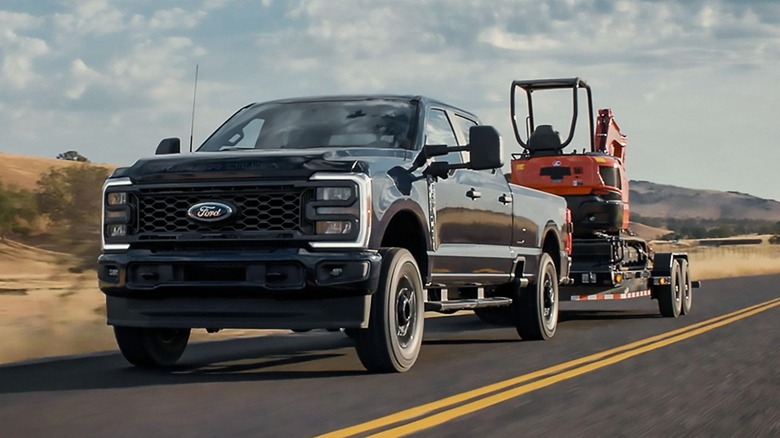Why Do Diesel Engines Usually Make More Torque Than Gas Cars?
The advantages of diesel engines over their gas-powered counterparts are well documented. Compared to gas engines, diesels are more durable, are more fuel efficient, and, generally, provide more pulling power due to their higher torque output. While some of the smallest diesel engines don't produce massive amounts of torque, and in some cases gasoline engines outperform diesels, the engines with the most torque are usually diesel powered.
Some of the reasons diesel engines typically produce more torque than gas engines include the relatively high compression ratio, long crankshaft stroke, and frequent use of turbochargers. In addition, the properties of diesel compared to gasoline play an important role as well. Diesel has a slower burn rate that allows ignition, controlled by injector timing, sooner during the piston's cycle, and it has a higher energy density, containing around 147,000 BTUs of energy, roughly 22,000 more BTUs than gasoline. Let's take a closer look at the mechanics behind diesel engine torque.
The mechanics of diesel engine torque
In a video from the Engineering Explained YouTube channel, Jason Fenske goes into the mechanics of diesel engine torque. He explains that diesel engines use higher compression ratios than gasoline engines to aid in the fuel's ignition. Higher compression ratios mean more power for both fuel-type engines.
How does higher compression help ignition? According to the National Air and Space Museum, part of the Smithsonian Institute, compressing air forces its molecules to collide frequently, exchanging energy and increasing heat. The heated air inside the combustion chamber helps ignite the diesel fuel when it's injected.
Are you ready for math? Jason tells us that torque, defined as a force that produces rotation, is calculated by multiplying force times distance. However, the diesel engine's longer stroke advantage has less to do with how far the piston travels in the cylinder and more about the connecting rod's leverage on the crankshaft. Imagine encountering a stubborn nut or bolt, do you reach for a stubby ratchet or a long breaker bar to get it loose? More leverage is the key.
Likely, the most significant advantage leading to increased diesel engine torque is the predominant use of forced air induction. While diesel engines often use turbochargers, gasoline engines see benefits too. However, diesel engines tend to be constructed from heavier components allowing higher boost pressures, along with more compression, and operate efficiently over a wider range of air to fuel ratios than gasoline engines. Those factors allow diesel engines to use turbochargers more effectively than gas engines.
Examples of how gas engines compare to diesel engines
Ford's 7.3-liter V8 makes 485 lb-ft of torque using 87-octane gasoline without forced air induction. It has a lower 10.5:1 compression ratio, and its cylinders are larger in diameter than the length of its crankshaft stroke at 4.22 inches and 3.98 inches respectively. When it comes to towing, the 7.3-liter gas V8 capability falls nearly 15,000 pounds short of the 6.7-liter Power Stroke's 35,400-pound maximum rating in a 2020 F-350 dually.
The 6.7-liter Cummins has a 4.21-inch cylinder bore and 4.88-inch crankshaft stroke, compared to the 6.4-liter HEMI gas engine's 4.09-inch cylinders and 3.72-inch stroke. The HEMI makes 600 lb-ft less torque than the High-Output Cummins' 1,075 lb-ft, with a maximum output of 475 lb-ft. Ram lists the HO Cummins equipped 2024 3500's maximum towing capacity at 37,090 pounds, while the 6.4L HEMI engine equipped 3500 only has an 18,210-pound max tow rating.
Unlike the others, the 6.6-liter Duramax has a closer bore and stroke relationship to its gas counterpart, with 4.055-inch diameter cylinders and a 3.9-inch stroke. The GM heavy-duty pickup gas engine is also a 6.6-liter but uses 4.06-inch cylinders and a 3.86-inch crankshaft stroke. Where the Duramax makes 975 lb-ft of torque and offers up to a 35,500-pound tow rating, the 6.6-liter gas engine produces 464 lb-ft and limits towing to a maximum 18,760 pounds.


